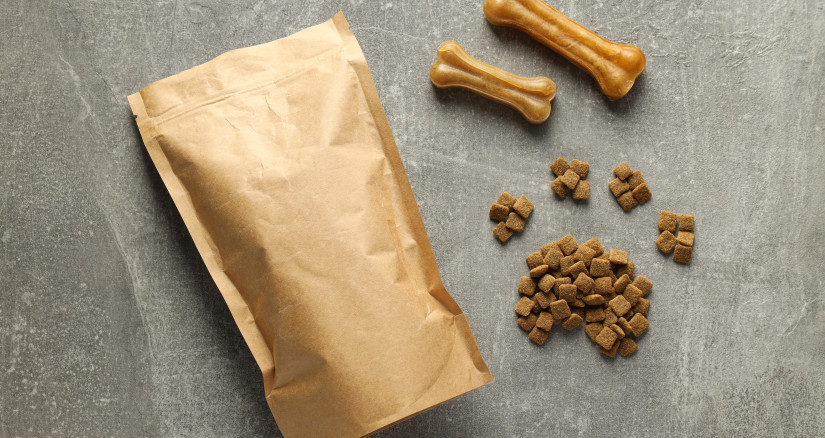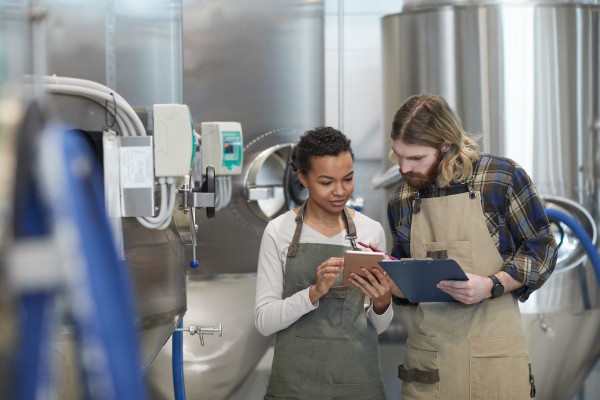
In the Unlikely Event of a Packaging Failure
I was recently on an airplane traveling to a client site to execute a packaging trial when the flight attendant began the usual safety protocol. Strangely, she placed extra emphasis on the phrase: “In the unlikely event of a water landing…” And then she repeated it—multiple times.
For reasons known only to my brain, this got me thinking about packaging trials—specifically, why they can be so difficult to execute properly, and how skipping or rushing them can lead to real consequences, similar to how zoning out during take-off safety instructions could lead to danger during a crash.
Marketers love to dream up bold and innovative concepts, while product developers work hard to bring those ideas to life with strong formulations. The packaging engineer’s role is to bring those two components together, delivering packaging that checks the boxes for form, fit, and function. But that’s only the beginning. They also need to confirm manufacturability and ensure the packaging performs throughout the entire supply chain—from production line to store shelf to consumer pantry.
It’s not an easy task.

Photo by seventyfourimages
What Makes a Successful Packaging Trial?
Packaging is a science. Like any scientific discipline, it requires careful planning, controlled testing, and data-driven conclusions. Successful packaging trials follow a methodical approach—starting with a hypothesis, defining key variables, and validating outcomes through real-world testing.
Here are the fundamentals of a typical test protocol:
Clear Trial Purpose and Scope
Begin by defining what you’re trying to learn. Are you testing seal integrity, shelf-life performance, machinability, consumer usability, or sustainability improvements? A focused purpose keeps the trial aligned with business goals. The scope should clarify what’s included—and what’s not—to manage expectations, scope creep, and resource allocation, especially when time or materials are limited.
Defined Objectives
Objectives transform the trial purpose into measurable outcomes. Strong objectives are S.M.A.R.T. (Specific, Measurable, Attainable, Realistic, and Timebound). Avoid vague goals like “test new pouch.” Instead, specify what performance metrics you’re measuring and why. This ensures the data will support actionable decisions.
A Solid Technical Foundation
Trials must be built on clear technical documentation. Outline the materials, packaging formats, and variables involved such as:
- Substrate specifications (film type, barrier properties, gauges)
- Structural elements (zipper type, gusset style, seal layers)
- Operational factors (seal temperatures, dwell times, machine speed)
- Baseline/control conditions for comparison
This level of details enables reproducibility and supports troubleshooting if results deviate from expectations.
A Detailed Test Procedure with Success Criteria
Before the first package is sealed, define how the trial will be run, what data will be captured, and what success looks like. Your procedure should cover:
- Equipment settings and test setup
- Sample plan and testing intervals
- Methods used (e.g., ASTM burst, drop tests, visual inspections)
- Data collection responsibilities and tools
Predefined success criteria prevent bias and ensure the results lead to meaningful conclusions—not assumptions.
But the most critical piece? Organizational support and buy-in.
Organizational buy-in is crucial in package engineering testing because it ensures that everyone within the company understands the importance of testing, supports the testing process, and implements the changes recommended by the results. Too often, packaging trials are deprioritized, as testing can be seen as an unnecessary expense or a hindrance to production. Packaging engineers are often asked to “lean in” and make spec decisions based on existing sizes or materials to save time. The assumption is: if it worked before, it should work again.
That would be fine if all pet food formulas were created equally. But they’re not.
When Assumptions Go Sideways
Let’s say a brand is developing a new dry dog food formula and wants to offer it in 4-lb, 16-lb, and 24-lb bag sizes. Marketing sees existing SKUs in those sizes and asks, "Do we really need to trial this? Can’t we use the current bags?"
To answer that question, packaging engineers typically compare key attributes like bulk density, kibble shape and size, and moisture content. But as the formulation evolves, those assumptions often change. Product trials may reveal differences in processing parameters like moisture, degree of starch cook, or specific mechanical energy (SME)—all of which not only affect palatability, but more critically, bulk density.
If the new product has a lower density than expected, the bags may not have enough headspace to seal correctly. This can lead to burst seals or gussets during production or pallet heights which exceed safe stacking guidelines. If the density is higher, the bags might look severely underfilled, leading to negative consumer perception or unstable pallet configurations that pose a safety hazard during distribution.
If these issues are only discovered during production, it’s often too late to course-correct without impact. Manufacturing is left to troubleshoot on the fly—slowing line speeds, increasing downtime, and introducing safety concerns. The truth is simple: if you can’t properly and safely fill, seal, and ship a bag, you can’t produce the product.
This can delay a launch or trigger an immediate redesign effort, pulling resources away from future innovation to fix problems that could have been prevented. And redesign is not cheap. Think: product loss, graphics revisions, material write-offs, and a whole lot of frustration. Recognizing and supporting the packaging function early is what keeps launches on track—and prevents costly surprises down the line.

Photo by Wdnld
Landing Safely
It’s not all bad news. With a solid packaging test plan and the right support, many risks can be minimized—or eliminated entirely.
It’s important to recognize the broader pressures project teams face. Marketing is racing toward go-to-market deadlines. Product developers are adapting formulas based on feeding performance. Operations is driving for efficiency and throughput. Everyone is aligned around launching great products quickly.
That’s why investing in packaging trials isn’t about slowing down. It’s about ensuring the product makes it to market safely, efficiently, and without surprises.
For example, a premium pet food brand planned a new high-moisture kibble product using a novel film structure. During distribution testing, the packaging team discovered that under certain temperature conditions, the film delaminated—jeopardizing product freshness. Because the issue surfaced early in a well-structured test plan, backed by organizational buy-in and time intentionally budgeted for testing, the team was able to pivot to a more robust film without delaying the launch. The result: a successful rollout, no customer complaints, and no surprises for operations.
Plan for the Unlikely
Just like the flight attendant preparing for the rare water landing, packaging teams must prepare for "unlikely" deviations in formulation and performance. That means not skipping the trial or assuming past specs will always apply. And it means treating packaging like a priority, rather than an afterthought.
Successful launches require a holistic approach that include packaging from the start. Because when things go wrong, the package is the first (and sometimes the only) thing the consumer sees.
So plan, test, validate—and support your packaging teams. In the unlikely event of a packaging failure, you’ll be glad you did.
How We Can Help
At BSM Partners, we understand that packaging isn’t just a container—it’s a critical part of your product’s success. Our packaging engineering team partners with pet food brands to guide packaging design, validate new materials and sizes, and troubleshoot issues that arise during scale-up or launch.
Whether you’re developing a new formula, navigating changes in product density, or simply trying to avoid costly surprises during production, we’re here to help you get it right the first time. From initial concept through full-scale execution, our goal is to ensure your packaging performs across manufacturing, supply chain, and consumer expectations.
Need support with a packaging trial, spec development, or line validation? Let’s talk. Your product deserves packaging that works just as hard as the team behind it.
Follow us on LinkedIn for the latest updates on all things happening here at BSM Partners.
About the Author
Oksana Lylak is the Director of Packaging Engineering at BSM Partners, offering over 20 years of experience across industries like automotive, consumer packaged goods, and pet food. Oksana specializes in developing innovative, cost-effective packaging solutions. Passionate about sustainability and pet food packaging, she combines technical expertise with a solution-driven approach to drive industry advancements.
This content is the property of BSM Partners. Reproduction or retransmission or repurposing of any portion of this content is expressly prohibited without the approval of BSM Partners and is governed by the terms and conditions explained here.